KPT-330
- CAS NO.:1393477-72-9
- Empirical Formula: C17H11F6N7O
- Molecular Weight: 443.31
- MDL number: MFCD27987944
- SAFETY DATA SHEET (SDS)
- Update Date: 2024-11-19 15:53:33
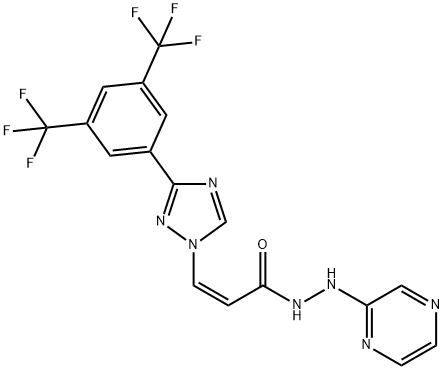
What is KPT-330?
Absorption
A single 80 mg dose of selinexor produces a mean Cmax of 680 ng/mL and a mean AUC of 5386 ng*h/mL. This relationship is dose proportion over the range of 3-85 mg/m2 which encompasses the range of 0.06-1.8 times the approved dosage. The official FDA labeling reports the Tmax as 4 hours but phase 1 studies have found a range of 2-4 hours. Administering selinexor with food, either a high or low fat meal, results in an increase in the AUC of approximately 15-20% but this is not expected to be clinically significant.
Description
Selinexor (1393477-72-9) is a potent inhibitor of the nuclear export receptor, chromosome region maintenance 1 (CRM1; Exportin-1 (XPO1)). It exhibited potent growth suppression in various T-cell acute lymphoblastic leukemia (T-ALL) cells (IC50’s = 34-203 nM)1?and pancreatic cancer cells (IC50?~ 150 nM)2. Selinexor is being investigated as a possible chemotherapeutic in treating multiple types of cancer.3-8?Currently in clinical trials.
The Uses of KPT-330
KPT 330 is a chromosome maintenance protein 1 (CRM1) inhibitor. KPT 330 suppresses downstream effectors of B-cell activation, proliferation and migration in chronic lymphocytic leukemia cells.
Indications
Selinexor is indicated in combination with bortezomib and dexamethasone for the treatment of multiple myeloma in adult patients who have received at least one prior therapy. Selinexor is also indicated in combination with dexamethasone for the treatment of relapsed or refractory multiple myeloma in adult patients who have received at least four prior therapies and who are refractory to at least two proteasome inhibitors, two immunomodulatory agents, and an anti-CD38 monoclonal antibody.
Selinexor is also indicated under an accelerated approval scheme for the treatment of relapsed or refractory diffuse large B-cell lymphoma (DLBCL), not otherwise specified, including that arising from follicular lymphoma, in adult patients who have received at least two prior lines of systemic therapy. Continued approval for this indication may be contingent on verification in confirmatory clinical trials.
Background
Selinexor is a first-in-class selective inhibitor of nuclear transport (SINE) compound. Selinexor, in combination with bortezomib and dexamethasone, is currently approved for the treatment of multiple myeloma, a type of cancer formed from antibody-producing plasma cells. This condition is typically treated with high dose bortezomib and dexamethasone chemotherapy followed by an autologous stem-cell transplant. Other chemotherapies for multiple myeloma include lenalidomide and dexamethasone, thalidomide, and may include melphalan if the patient is not eligible for transplant. Selinexor was also granted accelerated approval for the treatment of adult patients with relapsed or refractory diffuse large B-cell lymphoma (DLBCL) that have gone through at least 2 lines of systemic therapy.
The FDA approved Selinexor in June 2019. The use of selinexor in combination with bortezomib and dexamethasone was approved by Health Canada in June 2022 for the treatment of multiple myeloma in adult patients who have received at least one prior therapy.
Pharmacokinetics
Selinexor causes cell cycle arrest and apoptosis in cancer cells.
Metabolism
Selinexor is known to be metabolized through CYP3A4, UDP‐glucuronosyltransferases, and glutathione S-transferases although the metabolite profile has yet to be characterized in published literature. The primary metabolites found in urine and plasma are glucuronide conjugates.
storage
Store at -20°C
References
1) Etchin?et al.?(2013),?KPT-330 inhibitor of CRM1 (XPO1)-mediated nuclear export has selective anti-leukaemic activity in preclinical models of T-ALL and AML; Br. J. Haematol.?161?117 2) Azmi?et al. (2013),?Selective Inhibitors of Nuclear Export Block Pancreatic Cancer Cell Proliferation and Reduce Tumor Growth in Mice; Gastroenterology?144?447 3) Desisto?et al.?(2019),?Exportin 1 inhibition induces nerve growth factor receptor expression to inhibit the NF-kB pathway in preclinical models of pediatric high-grade glioma; Mol. Cancer Ther.?19 540 4) Aboukameel?et al. (2018),?Down-regulation of AR splice variants through XPO1 suppression contributes to the inhibition of prostate cancer progression;?Oncotarget?9?35327 5) Baek?et al.?(2018),?XPO1 inhibition by selinexor induces potent cytotoxicity against high grade bladder malignancies; Oncotarget?9?34567 6) Wahba?et al.?(2018),?The XPO1 Inhibitor Selinexor Inhibits Translation and Enhances the Radiosensitivity of Glioblastoma Cells Grown In Vitro and In Vivo; Mol. Cancer Ther.?17?1717 7) Arango?et al.?(2017),?Selinexor (KPT-330) demonstrates anti-tumor efficacy in preclinical models of triple-negative breast cancer; Breast Cancer Res.?19?93 8) Conforti?et al.?(2017),?Therapeutic Effects of XPO1 Inhibition in Thymic Epithelial Tumors; Cancer Res.?77?5614
Properties of KPT-330
| Density | 1.55±0.1 g/cm3(Predicted) |
| storage temp. | -20°C |
| solubility | Soluble in DMSO (up to at least 25 mg/ml). or in Ethanol (up to at least 25 mg/ml) |
| form | solid |
| pka | 9.74±0.43(Predicted) |
| color | Off-white |
| Stability: | Stable for 1 year from date of purchase as supplied. Solutions in DMSO or ethanol may be stored at -20° for up to 2 months. |
Safety information for KPT-330
Computed Descriptors for KPT-330
KPT-330 manufacturer
Venkatasai Life Sciences
New Products
(S)-3-Aminobutanenitrile hydrochloride 4-Methylphenylacetic acid N-Boc-D-alaninol N-BOC-D/L-ALANINOL Tert-butyl bis(2-chloroethyl)carbamate 3-Morpholino-1-(4-nitrophenyl)-5,6-dihydropyridin- 2(1H)-one Furan-2,5-Dicarboxylic Acid Tropic acid S-2-CHLORO PROPIONIC ACID ETHYL ISOCYANOACETATE 2-Bromo-1,3-Bis(Dimethylamino)Trimethinium Hexafluorophosphate 4-IODO BENZOIC ACID 3-NITRO-2-METHYL ANILINE 1-(2,4-DICHLOROPHENYL) ETHANAMINE (2-Hydroxyphenyl)acetonitrile 4-Bromopyrazole 5,6-Dimethoxyindanone 2-(Cyanocyclohexyl)acetic acid 4-methoxy-3,5-dinitropyridine 1-(4-(aminomethyl)benzyl)urea hydrochloride 2-aminopropyl benzoate hydrochloride diethyl 2-(2-((tertbutoxycarbonyl)amino) ethyl)malonate tert-butyl 4- (ureidomethyl)benzylcarbamate Ethyl-2-chloro((4-methoxyphenyl)hydrazono)acetateRelated products of tetrahydrofuran
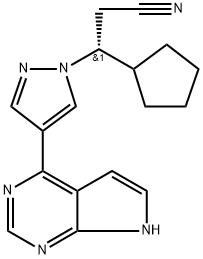
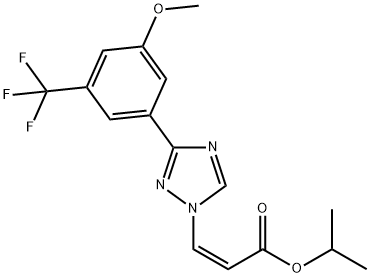
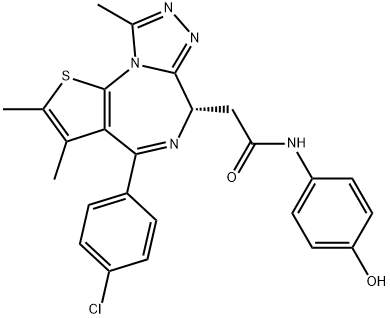
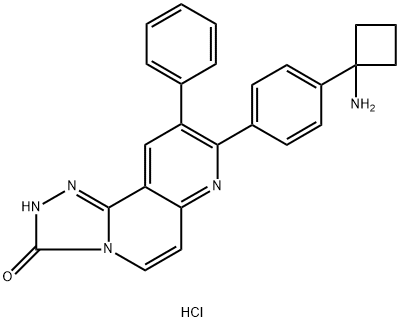
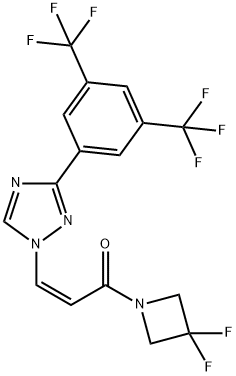
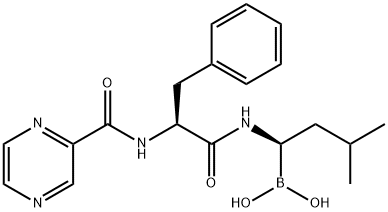
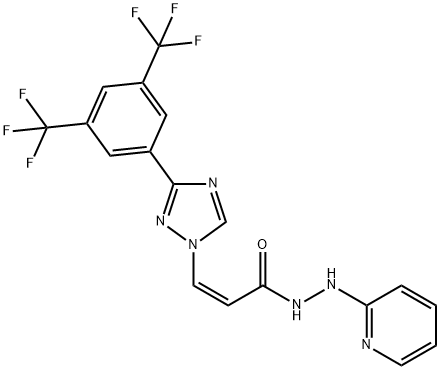
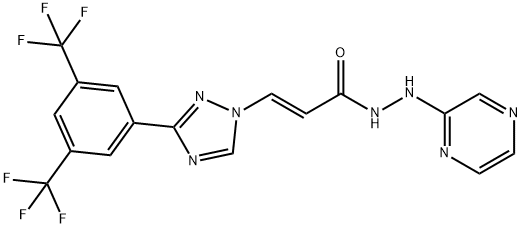
You may like
-
 1393477-72-9 Selinexor 99%View Details
1393477-72-9 Selinexor 99%View Details
1393477-72-9 -
 Kpt-330 95% CAS 1393477-72-9View Details
Kpt-330 95% CAS 1393477-72-9View Details
1393477-72-9 -
 1975-50-4 98%View Details
1975-50-4 98%View Details
1975-50-4 -
 2-HYDROXY BENZYL ALCOHOL 98%View Details
2-HYDROXY BENZYL ALCOHOL 98%View Details
90-01-7 -
 2-Chloro-1,3-Bis(Dimethylamino)Trimethinium Hexafluorophosphate 221615-75-4 98%View Details
2-Chloro-1,3-Bis(Dimethylamino)Trimethinium Hexafluorophosphate 221615-75-4 98%View Details
221615-75-4 -
 61397-56-6 CIS BROMO BENZOATE 98%View Details
61397-56-6 CIS BROMO BENZOATE 98%View Details
61397-56-6 -
 14714-50-2 (2-Hydroxyphenyl)acetonitrile 98+View Details
14714-50-2 (2-Hydroxyphenyl)acetonitrile 98+View Details
14714-50-2 -
 118753-70-1 98+View Details
118753-70-1 98+View Details
118753-70-1